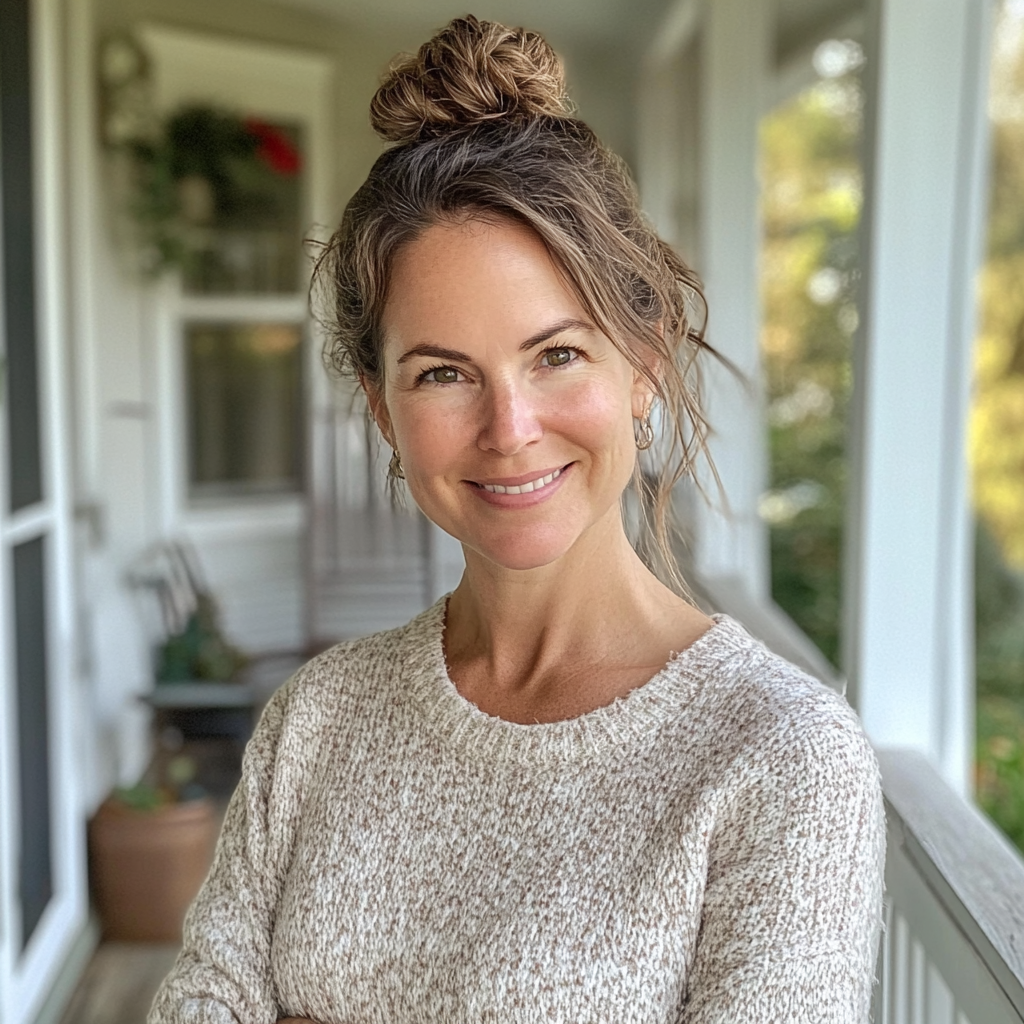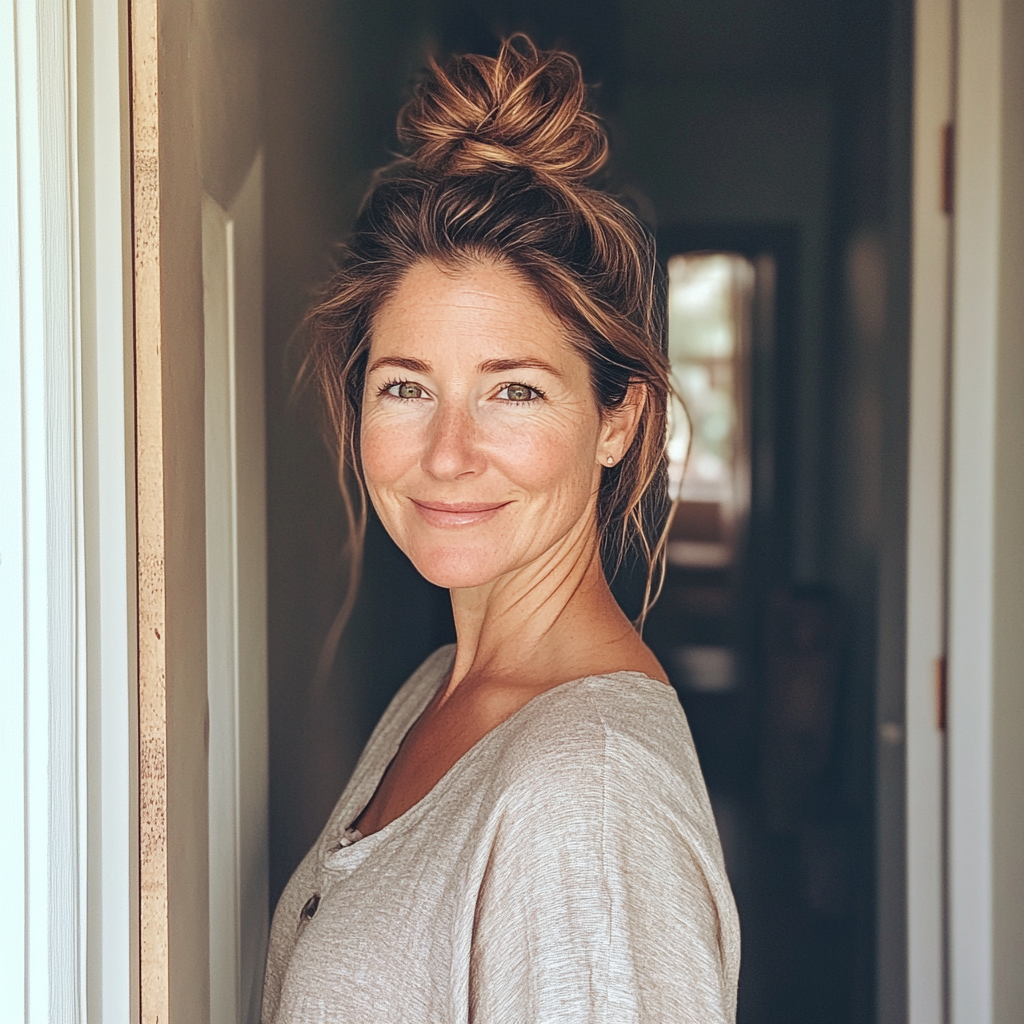
When Millie Smith and Lewis Cann found out they were expecting a baby, they were overjoyed. As there was a history of twins in Millie’s family, she had a strong feeling that she was going to give birth to two little ones, and her instincts were right. The ultrasound confirmed that she was indeed expecting twins, but the doctors told them that one of the babies had a very small chance of survival.
ragically, one of their daughters was born at 30 weeks with anencephaly, a serious condition that affects the development of the brain and spinal cord. They learned that their precious baby had only moments or hours to live.
Knowing this, Millie and Lewis wanted to give her a name before they said goodbye. They chose the name Skye. Millie explained: “We felt she needed a name before she arrived. Knowing she wouldn’t be with us for long, I wanted her to have a name in those fleeting moments”.
The name “Skye” symbolized a connection to a place they could always remember when they looked up to the sky. “We held Skye close as she died. It was the most heartbreaking moment of our lives, but I’m proud that she fought to spend that time with us.” Skye only lived for three hours, a brief time filled with love while her parents cherished her beauty and presence.

After her death, Millie and Lewis were supported by a “bereavement midwife” and given access to a “Daisy Room”, a special room where parents could spend time with their baby before and after death. However, after Skye was gone, her memory seemed to fade; no one spoke of her, leaving Millie feeling like her daughter had never existed, which made her angry.
“Most of the nurses knew what had happened, but as the weeks went by, people stopped mentioning Skye. Other families around me had no idea about our loss”, Millie recalls.

While her other daughter, Callie, was still in the NICU, another mother who knew nothing about Millie’s situation remarked how lucky she was not to have twins. “None of the other parents knew about Skye, and that innocent comment almost broke me. I left the room in tears but didn’t have the heart to explain”, Millie said. “A simple sticker could have prevented this.”
This experience inspired Millie to design a sticker for incubators to mark the loss of one or more babies in a multiple birth. She chose butterflies to symbolise the ‘flown away’ babies and used the colour purple, which is suitable for any gender.
From this idea grew the Skye High Foundation, which promotes the Purple Butterflies initiative and helps raise awareness in hospitals around the world. The foundation also offers a range of purple butterfly merchandise.
“Although I can’t prevent these situations from occurring, I believe the more support we can provide through initiatives like the stickers, the better it will be for others who suffer this loss. It’s an incredibly tough journey”, said Millie. Today, her surviving daughter Callie is seven years old.
I Overheard My Neighbor’s Daughter and My Husband Discussing Their Affair – Instead of Making a Scene, I Invited Her to Our House the Next Day

When Lexie overhears her husband and the neighbor’s daughter discussing their affair, she doesn’t cry or confront them. Instead, she plans. With a clever invitation and a jaw-dropping twist, she flips the script on their betrayal, serving up karma with a side of sass. Revenge has never been this satisfying.
My husband, Mark, and I had been married for ten years. Two kids, a mortgage, and what I thought was a solid life bound us together. Sure, Mark wasn’t much help around the house.
He didn’t cook, clean, or manage the endless chaos of raising kids.

A smiling woman | Source: Midjourney
That was all me.
Exhausting?
Absolutely.
But I told myself it was fine because “we’re a team, Lexie.”
Except, apparently, Mark had decided to join a different team altogether.
It started with a bag of groceries.

Bags of groceries | Source: Midjourney
I had just pulled into the driveway after a grueling trip to the store. My car was packed with heavy bags and I was mentally preparing for the solo effort of hauling everything inside.
Mark, as usual, wouldn’t lift a finger.
That’s when I heard voices coming from the porch.

A woman holding a bag of groceries | Source: Midjourney
It was Mark, chatting with Emma, our neighbor’s 25-year-old daughter who’d recently moved back to town. Her parents were so proud when she got into her internship after she studied interior design.
Now, she and Mark stood there laughing like old friends.
I almost called out to say hello, but something made me stop.
I ducked behind my car, hidden by the shadows and groceries, and listened.

A couple on a porch | Source: Midjourney
“I can’t believe she hasn’t figured it out yet,” Emma said, her laughter ringing through the cool afternoon air.
Mark chuckled in response.
“She’s so busy with the kids and the house, Em. Lexie barely notices anything else. She’s gotten so gray, too. But she just brushes her hair the other way to cover it up. Honestly, she’s let herself go so much. She doesn’t even look like a woman to me anymore. She’s nothing compared to you, my princess.”
Emma giggled.

A man holding his head | Source: Midjourney
“Well, lucky for you, mister, I’m here now. You can parade me all your want. And trust me, there’s no gray hair in sight.”
Then they kissed.
Kissed?!
I clutched a bag so tightly that I could feel the plastic starting to tear. My vision blurred with tears, the humiliation and rage coursing through me. They continued their conversation, the shameless flirting, all oblivious to my presence.

A shocked woman | Source: Midjourney
But other than those few tears, I didn’t cry properly. I didn’t scream or shout. I didn’t confront them.
Instead, I quietly carried the groceries inside, using the back door, and started my planning.
The next morning, I woke up with a calmness that surprised even me. I made Mark breakfast, his eggs fluffy and the bacon extra crispy. I made his coffee with a dash of cinnamon, just the way he liked it. I kissed him goodbye and waved cheerfully as he left for work.

A plate of food | Source: Midjourney
Once he was gone, I walked next door and knocked on Emma’s door.
She opened it, visibly surprised.
“Oh! Hi, Mrs…Um, hi, Lexie,” she stammered, her smile overly bright.
“Hi, Emma,” I said warmly. “I was wondering if you could come over tomorrow evening. I could really use your advice on something.”

A woman standing at a front door | Source: Midjourney
She blinked, her smile faltering.
“Advice? On what?”
“Well,” I hesitated, letting my voice sound unsure. “I’ve been thinking about redecorating the living room. Your parents mentioned you studied design, and I thought you could help pick out colors or furniture ideas. It’ll just take a little while.”

A bohemian themed living room | Source: Midjourney
For a moment, doubt flickered in her eyes. Then she tilted her head, a sly smile forming.
“Oh, I’d love to help! What time?”
“I think seven will be fine? Dinner time!” I said, my own smile sweet and sincere. “Thanks so much, Emma. You’re a lifesaver.”
Emma showed up the next evening, dressed to impress. She greeted me with her usual cheerful demeanor, practically radiating confidence.

A smiling woman | Source: Midjourney
I welcomed her warmly and led her inside.
“Oh, before we get to the living room,” I said casually. “I wanted to show you a few things.”
I guided her though the house, pointing out key areas of domestic responsibility.
“Here’s the dishwasher. You’ll need to load it every night because Mark doesn’t bother, of course. The kids’ laundry goes here, but please, be sure to separate the loads, since they’re sensitive to different detergents.”

A laundry room | Source: Midjourney
She just stared at me.
“Oh, and here’s the schedule for their after-school activities. You’ll need to pick them up on Tuesdays and Thursdays, but Wednesdays are free for errands. I’ve written down the plumber, electrician, and pediatrician’s numbers. Just in case.”
Emma’s smile faltered, her face growing pale.
“And this,” I said, leading her into the kitchen, where the smell of a roast chicken filled the room.

A cozy kitchen | Source: Midjourney
“This is where you’ll prep all the meals. And let me tell you, other than the breakfasts, and different school and work lunches, there are snacks and desserts and it’s all just a lot. Mark likes his steak medium-rare, by the way. The kids will only eat steak if it’s cooked all the way through. The deader the better.”
She gasped.
“Don’t expect Mark to say thank you, manners are not his thing. The kids are picky eaters, I’m sorry to say, but you’ll figure it out.”

Steak on a plate | Source: Midjourney
She stared at me, wide-eyed.
“Uh, Lexie. I’m not sure… I don’t think… I didn’t offer to babysit them.”
Just then, Mark walked in. His face went pale the moment he saw us.
“Lex, what’s going on?” he asked, his voice tight and high-pitched.

A woman looking confused | Source: Midjourney
“Oh,” I said brightly. “I probably should have included you in this, too. But I’m just showing Emma how to run the house. Since you think I’ve let myself go, I figured that it’s time for me to prioritize myself. And also, maybe it’s time for me to find someone who sees me as his princess. Emma, you’ll be taking over everything I do. Good luck!”
Before either of them could respond, there was a knock on the door.
I opened it to reveal Emma’s parents. The same couple who often babysat my kids if I was in a bind.

A shocked man | Source: Midjourney
“Oh! It smells delicious! I told Annie that you were going to make your roast chicken, Lexie,” Emma’s father said, joyfully.
“Thanks for coming, Anne and Howard. And thank you for raising such a helpful daughter,” I said. “She and Mark have grown so close that I thought it was time to make her part of the family.”
“Wait, what?” Anne asked, her eyebrows furrowed.

A smiling man | Source: Midjourney
“I’m leaving and Emma’s going to take care of everything now! You must be so proud of your little girl.”
Emma’s mom looked confused. Her dad, on the other hand, livid.
“Emma,” her mom said. “Tell me that this isn’t true. Tell me that this isn’t what I think it is.”
“It’s not what it looks like!” Emma stammered.

A close up of a woman | Source: Midjourney
Mark, ever the coward, tried to shift the blame.
“Lexie, this isn’t fair! Emma came to me! She came onto me!”
“Oh, did she?” I asked, raising an eyebrow. “So, you’re saying that you’re not responsible for sneaking around with a 25-year-old while insulting your wife?”
He opened his mouth to argue, but Howard cut him off.
“Mark, this is on you. Emma, this is equally on you. Let’s leave. Now.”

A man holding his head | Source: Midjourney
Emma shot me a venomous glare before storming out. Her parents followed, muttering a thousand apologies as they went.
Mark turned to me, desperation etched across his face.
“Lexie, please, babe,” he said. “Let’s talk about this. We’ve been together for so long… you owe me a conversation, at least.”
“Oh, sweetie,” I said. “We’ll talk, don’t you worry. My lawyer will call you tomorrow. But for now, I think you should pack your bags and leave.”

An upset man | Source: Midjourney
“Where will I go?” he asked pathetically. “My family lives in a different state.”
“I don’t really care, Mark,” I said, taking the chicken out of the oven. “Go to a motel. Go to a friend. Join the circus.”
“And the kids? Where are the kids?”
“They’re with my sister. And they’ll stay there until you sort your nonsense out. You can tell them the truth after the lawyers work out a settlement. I’m not going down without a fight, Mark.”

A roast chicken on a tray | Source: Midjourney
A week later, I heard through the grapevine that Emma had dumped Mark.
“It was fun while it lasted, but I didn’t sign up to play mom. To him or his kids.”
Two weeks later, Mark came back.
“What do you want?” I asked, seeing the bunch of flowers in his hand.

A man holding a bouquet of flowers | Source: Midjourney
“I’ve been so miserable without you,” he said, practically begging. “Please, let me come back. Please, Lexie. We can fix this. I miss my kids. I miss our family.”
“I don’t care, Mark!” I blurted out. “I truly don’t care. Now, if you don’t have anything productive to do here, then leave. The kids are at a playdate, and I’m only fetching them in a few hours.”
Then, I closed the door, leaving him speechless.

An upset woman | Source: Midjourney
It’s been months since that night, and I’ve never been happier. I’ve rediscovered pieces of myself I thought were long gone. I’ve started taking up salsa dancing, and with that, my confidence, joy and freedom came flooding in.
Amid the chaos, my kids and I have found a new rhythm, one filled with laughter and love.
As for Mark? He’s still single. And from what I hear, Emma’s parents aren’t thrilled with her either. But Anne does bake cakes and pies and sends them over often. And Howard likes to rake up the leaves in our front yard.
Karma’s a funny thing, isn’t it?

A happy woman | Source: Midjourney



Leave a Reply